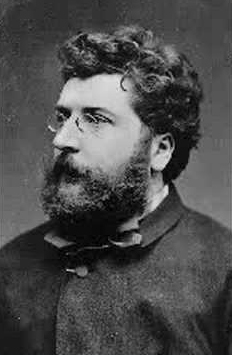


Work
L’Arlésienne : Suite No. 2 : Farandole
Besides his opera Carmen, Bizet also wrote incidental music for the stage, as was habitual at the time. L’Arlésienne or “The Girl from Arles” is a short story from Alphonse Daudet’s collection Letters from My Windmill, which he adapted into a play. Bizet wrote incidental music for it on commission from Léon Carvalho. While Carmen bathes us in the atmosphere of Spain, L’Arlésienne takes us to the south of France, in Provence.
The premiere, at Théâtre de Vaudeville, Paris, in 1872, was a flop. The orchestral suite (No. 1) Bizet arranged of the music, on the other hand, was a hit. Suite No. 2 was arranged and published in 1879, a few years after Bizet’s death, by Ernest Guiraud. Both suites are in four movements. We’ll be hearing the Farandole from Suite No. 2. It’s an old traditional Provençal built on a particular drum rhythm. You’ll probably recognize the tune, which has been borrowed as a Christmas carol and a lot more.
Composer

Georges Bizet
Georges Bizet was an important composer of the French Romantic period. He was born in Paris in 1838 and died in Bougival in 1875. He is known for his operas and orchestral suites. His career, like Mozart’s, was cut short by his death at age 36.
Bizet grew up in a family of musicians. His father taught singing and his mother was a pianist. His impressive aptitude for piano was seen at an early age. He entered the Paris Conservatory at age 9, where one of his teachers was Charles Gounod. He wrote his first symphony at age 17.
Unfortunately, Bizet’s early compositions failed to find much of an audience. Initially he had to arrange and transcribe the music of other composers to make a living. Some of his early works did catch on later, such as L’Arlésienne. The other works he is best known for today, the operas Les pêcheurs de perles and Carmen, became popular only after his death.



